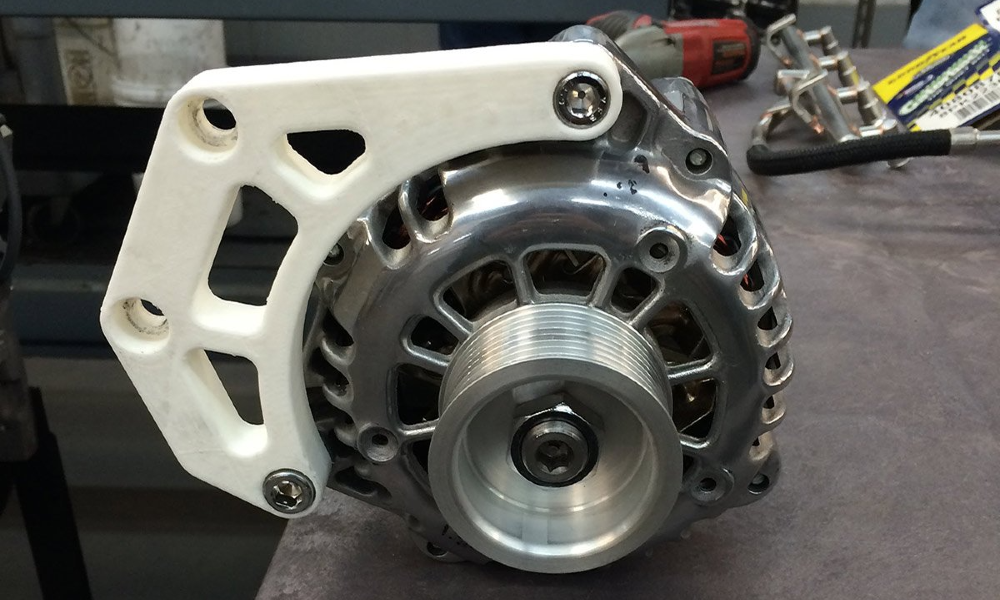The automotive industry faces incredible supply issues caused by the COVID-19 pandemic that could last for many years. Could 3D printing be the answer?
To most of us, 3D printing is a new technology that’s unproven. That said, the automotive industry is putting this technology through its proverbial paces. Why would they do that? Simple, many automakers are trying to find ways to thwart the supply issues caused by the pandemic. If this type of printing could provide any form of relief, it would be a huge benefit in the automotive market.
You Won’t Have a 3D Printed Car
It’s unrealistic and too expensive to expect complete cars to be built using the 3D printing process. Even though we won’t have a complete car from a printer, we could see some parts made using this process. The automotive industry has used this process for many years, and it’s become a vital part of the development process of many vehicles. In many cases, the parts that come off of these printers aren’t adding any structural benefit to the vehicles, but there are a lot of parts needed that aren’t directly part of the main structure or driving system of a vehicle.
Better Materials are Used Than Before
The early days of this printing process made us wonder if it would ever be applied to anything more than a few plastic parts. The technology is growing to offer more affordable and workable solutions for many automakers. In fact, Ford uses 3D printing options for some of the parts of the Ford Maverick. This compact truck has a system called FITS which allows customers to select prefabricated storage and convenience options or to create their own using a Ford app. Those parts that are custom-made for this truck are then printed using 3D technology.
Some Parts Can Stand In for Final Parts
The new materials being developed for this printing process allows automakers to have something that works while the supply chain normalizes. 3D printers can produce high precision, functional parts that work and are customized to the vehicle. This could mean adding a bit more aerodynamics to a sports car, better storage solutions to the family van or SUV, or a special hook or lever on a pickup truck that helps that truck meet the needs of the working professional behind the wheel.
Prototyping Made Better Through 3D Printed Parts
A new process of creating a prototype, called rapid prototyping, has become synonymous with this type of printing and technology. The process changes the speed at which product development can take place. Sometimes we think automakers are simply pumping out ideas as fast as they can think of them, but that’s not typically the case. In fact, many vehicles take up to four years to go from the idea phase to production. The prototyping process takes a long time, but with the use of 3D printers, automotive designers can quickly fabricate a part or assembly to see how it could work.
For years, the medium used to build a scale model of a car has been specialized clay. That clay might not be necessary much longer. With rapid prototyping, designers will make everything needed to test and fit. This could mean items for the interior, the dashboard, or a scape model of an entire car. With these new concept processes, the time from idea to production can be cut down considerably, and prototypes of materials could be much closer to the end result we’ll see in a production vehicle.
Specialized Parts Allow for Better Customization
Technology is advancing so rapidly that soon our cars will be so unique that each one on the road will be just as different as each person driving them. The same can be said for the future of 3D printing and the parts created. These printers can turn out custom, complex, high-performance parts designed to add better driving qualities to a vehicle. This could be as simple as having a specialized set of wheels, the right vents to let in more air, or adding a few under-seat storage drawers that make traveling with kids much easier for parents.
In fact, some companies, such as Bugatti, already work with exceptional materials to build parts using 3D technology. The eight-piston monobloc brake caliper offered by this brand is the world’s largest functional titanium 3D printed car part. While not everyone can afford a Bugatti that’s doesn’t mean every car made in the future couldn’t have some form of 3D printing used to create the parts for that vehicle.
Specialized Tools for Automakers Can be Made This Way
The fact that parts from a 3D printer are relatively inexpensive to create and can be designed on a computer encourages a new world for automakers. Tool and Die Makers could use CAD processes to design the specialized tools needed on computers and then have the printers create them. These tools could be single-use models meant for a quick fix, or they could be long-term solution items using stronger materials. This should cut down of the cost associated with building many of these tools without the use of CAD processes and 3D printers. This process is becoming one of the biggest production and manufacturing aids in the entire automotive industry. Because of the low cost, specified tools for single jobs aren’t a cost obstacle any longer.
Spare Parts are Scarce Right Now; 3D Printing Could be the Solution
Because the materials are more durable than ever before, using 3D printers to create an abundance of spare parts is a viable solution. This could mean creating parts that aren’t available to a repair shop or budling parts using a reverse engineering process to replicate parts for older vehicles. In some older cars, those parts no longer exist, but this process could offer the road map for a customer to buy the parts needed to work on their passion project. 3D printers could bridge the gap in the spare parts world.
No, Semiconductors Cannot be Produced this Way
The greatest shortage of parts in the automotive industry that we’ve heard about is in the supply of semiconductor chips. Unfortunately, we don’t have the technology to manufacture these microchips using 3D printers. That technology could be a future use for these printers, but for now, 3D printing cannot solve this part of the supply problem in the automotive world.
Will automakers turn to 3D printing to help ease their supply chain issues? Many already have turned to this technology for other aspects of their production process.
This post may contain affiliate links. Meaning a commission is given should you decide to make a purchase through these links, at no cost to you. All products shown are researched and tested to give an accurate review for you.




